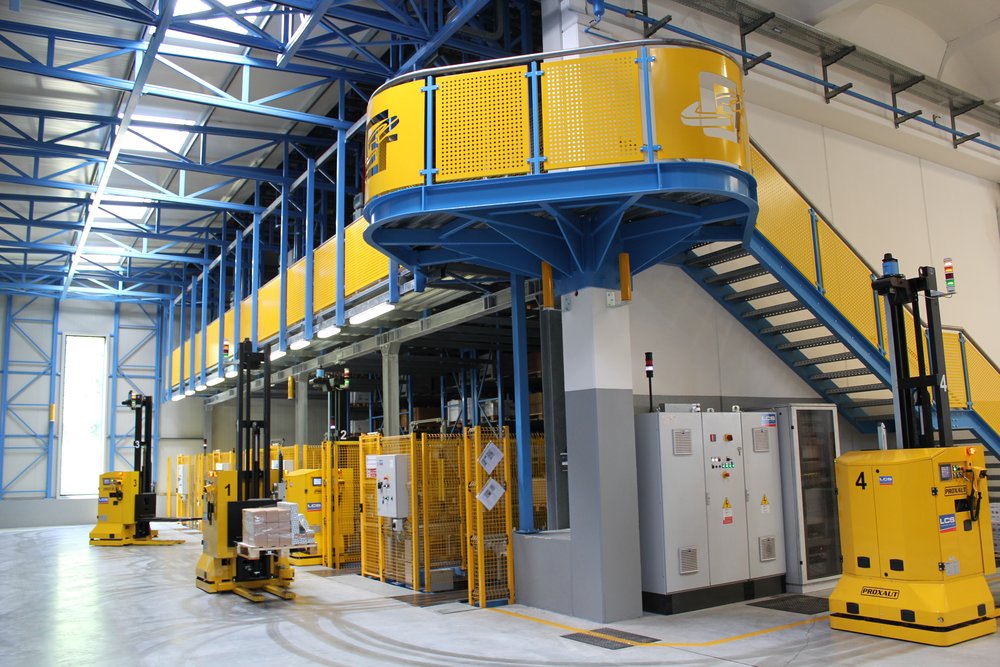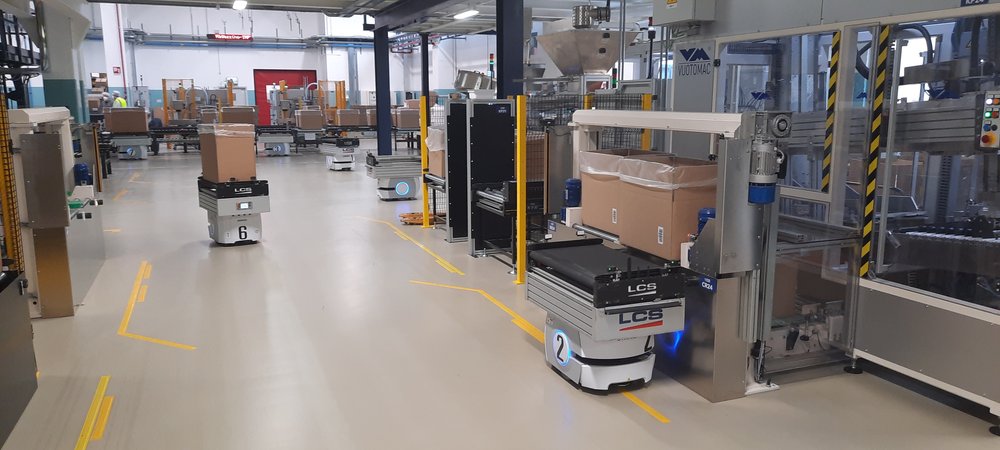As we have already explained, industrial automation is a fundamental requirement for increasing a company’s competitiveness in today’s market. To increase the degree of automation in a company, there are systems and technologies specifically implemented to promote a leaner and more efficient workflow and to return all those high value-added activities to humans.
Automated guided vehicles (AGVs) fall into this category: they are designed and engineered to work in collaboration with operators, by virtue of advanced programming and the adoption of state-of-the-art sensors.
These are internal handling or navigation systems (also known as robots) used to move raw materials, semi-finished and finished products. They operate without a driver and serve to improve the efficiency and flexibility of internal handling.

Advantages of AGVs
Lets look at the benefits of using this type of vehicle for material handling:
- They ensure maximum safety and integration with people’s work: they reduce accidents at work through controlled driving;
- They enable a continuous operational flow, with 24/7 usability;
- They favour increased implant performance;
- In the face of an initial investment, they allow a reduction in production costs;
- They allow greater maintenance flexibility;
- They allow greater maintenance flexibility;
- They are characterised by scalability: for example, if four AGVs are installed in a plant, after a few years, in the face of an increase in workload or special needs, another AGV can be installed without having to make any particular structural changes, but simply by modifying the vehicle routes.
Different types of self-driving vehicles
Today, the intralogistics sector is characterised by different types of driverless vehicles. Most frequently we find AGVs and its more recent evolutions, such as LGVs and AMRs. Let’s discover them in more detail to know their characteristics and differences.
AGV – Automated Guided Vehicles
AGVs (an acronym for Automated Guided Vehicles) are essential solutions for production logistics. They are vehicles that can interact with a dynamic environment and have the ability to quickly ‘decide’ how to move for maximum operational flexibility.
These systems move along fixed routes, which in most cases consist of magnets embedded in the ground or simple cables, or are flexible through the use of laser guidance. They rely on the action of sensors to avoid hitting obstacles, even if they are not able to circumvent them. Designed to execute simple orders, such vehicles are characterised by a fair amount of onboard intelligence.
AGVs also allow complete integration between the company’s information system and other management systems or devices, for example forklifts, robot and assembly lines, automated warehouses, etc.
LGV – Laser Guided Vehicles
LGVs (an acronym for Laser Guided Vehicles) are a subcategory of AGVs, and represent their most advanced form. These vehicles are highly flexible, designed to work in environments where human operators are also present. In order to move, they do not need ground references – unlike AGVs – as they rely on lasers, thanks to which they can determine their position within the working area.
In concept, therefore, LGVs would be able to carry out transports without markers, although then in some cases known points are added to reinforce the map that is detected by the laser. Increased operational efficiency is one of the most significant benefits of using such vehicles.
AMR – Autonomous Mobile Robots
AMRs, also known as AIVs (Autonomous Intelligent Vehicles), can also be considered as a recent evolution of AGV systems. Known as autonomous mobile robots, they have the advantage of being easy to configure, also because they do not require significant modifications to the production plant. This means that implementation times are short, resulting in reduced ROI.
AMRs do not need coils, magnets or cables in order to function: they therefore do not require modifications to the infrastructure. Reliability and speed are the basic characteristics of the activities performed by these systems, which are able to carry out their work in conditions of maximum safety by recognising and bypassing forklift trucks, people and any other obstacles in their path.

LCS software for material handling and the integration with driverless vehicles
LCS, thanks to its proprietary software, is able to integrate driverless vehicles within more or less complex plants, efficiently connectic robotics with software. In other words, the software plans and controls the route of these vehicles and the activities they are called upon to carry out, such as loading, unloading and driving, while highlighting any anomalies that may arise during their operation.
Contact us without obligation if you would like further information and to learn more about the material handling solutions best suited to your specific needs.



